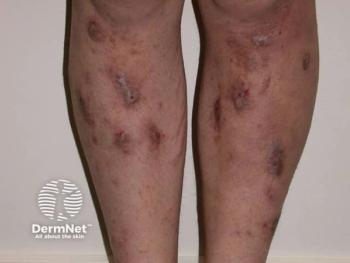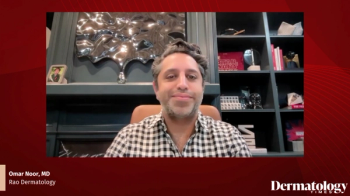
Research, development push tx into mainstream
National report - It has taken some time, but the use of combination therapies has become a trend that's spread throughout the dermatologic world.
James J. Leyden, M.D., emeritus professor of dermatology at the Hospital of the University of Pennsylvania, is one of the pioneers of dermatologic combination therapy. In a 1973 paper, Dr. Leyden suggested a combination therapy of topical retinoids and the oral antibiotic tetracycline for treating acne.
"We demonstrated through controlled tests that the combination of the two provided better results than either one alone," he says. "While the concept of combination therapy didn't catch on right away, as other, newer formulations came along, change began to occur, and more dermatologists found combination therapies extremely useful."
"Tretinoin is an ingredient in Retin-A that contributed to its reputation as being irritating and hard to use," Dr. Leyden says. "Therefore, Retina-A got pigeonholed as being effective only for noninflammatory acne. Later, data was introduced showing that Retin-A, combined with topical and oral antibiotics, was highly effective as a treatment for inflammatory acne as well."
Most recently, the combination of tretinoin and clindamycin has been found to be effective in acne treatment, and is in the process of being approved by the U.S. Food and Drug Administration, Dr. Leyden says.
"It's been a slow transition since 1973," Dr. Leyden says, "but combination therapy for the treatment of skin conditions is much more entrenched in dermatologic practices now."
R&D helped sway derms Fran Cook-Bolden, M.D., assistant clinical professor of dermatology at the College of Physicians and Surgeons at New York's Columbia University, says medical research and development has played a major role in combination therapy gaining acceptance among dermatologists.
"While we have known that many biological and pathophysiologic mechanisms can lead to skin disease and disorders, science and technology have taught us how to apply combination therapies to treat these processes, and we've adjusted to this knowledge and learned the best ways to apply these multi-faceted (or combination) therapies," she says.
Dr. Cook-Bolden, who also is director of the Skin Specialty Group and the Ethnic Skin Specialty Group in New York and has a private practice on the city's Upper East Side, breaks down the various kinds of combination therapies into three main categories:
"An increasingly common approach to treating pigmentation disorders, for example, is to use topical combination creams in conjunction with microdermabrasion or chemical peels," she says. "The exfoliation that can result from chemical peels or microdermabrasion allows the affected cells to shed more quickly, and allows the cream to more quickly and effectively penetrate the targeted area."
Combined combos Dr. Cook-Bolden refers to approaches that use topical creams along with medical devices as "combined combination therapies," and cites another example of the advent of combination therapy in the treatment of psoriasis.
Newsletter
Like what you’re reading? Subscribe to Dermatology Times for weekly updates on therapies, innovations, and real-world practice tips.


















